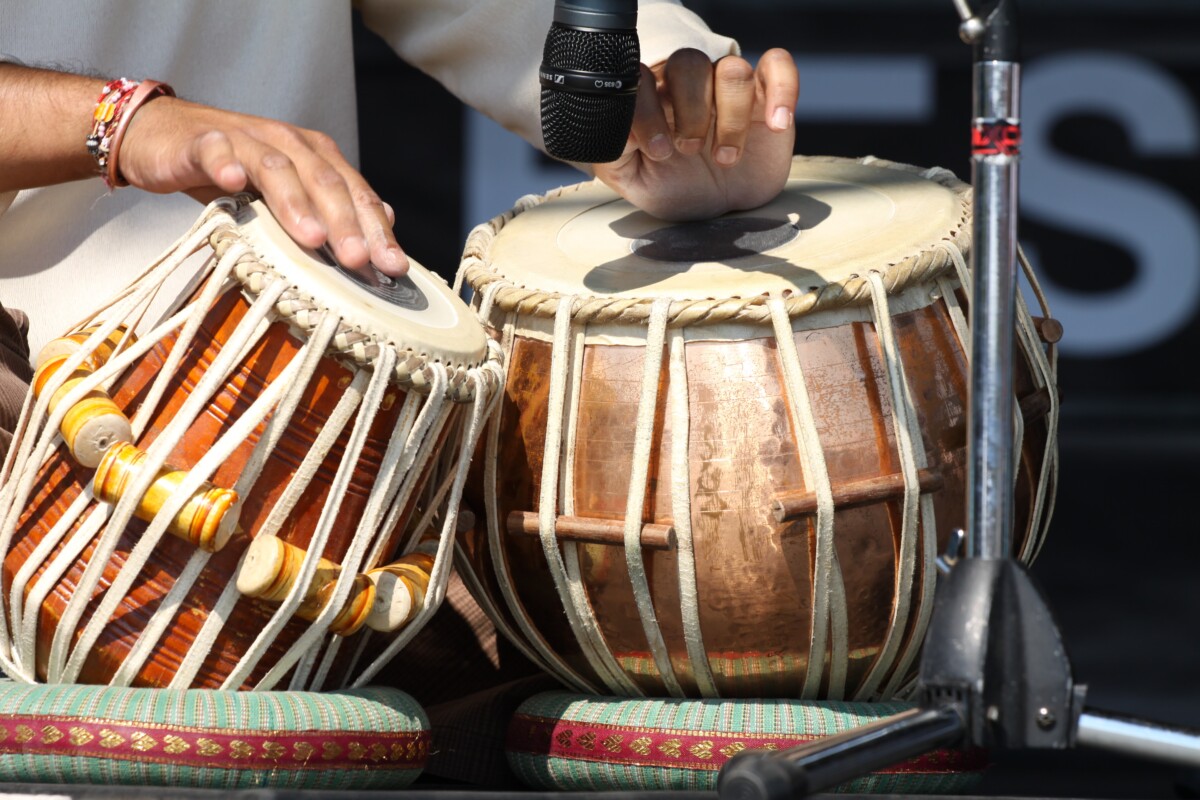
In such contemporary times,we have people more invested into interactions on their mobile devices than that in real-life, which has inevitably been amplified thanks to this unprecedented pandemic. In a time and age where attention spans are invariably shrinking due to this very nature, things of intrinsically high duration or length are more unfortunately likely to lose traction, or simply, subject to compression. Dhrupads are one of many examples.
Dhrupads are the oldest known style affiliated to Hindustani classical music and an essential component of Indian heritage. There are four variants, or styles, of Dhrupads: Gauhar, Khandar, Nuhar, and Dagar. Dhrupads transcend religious borders feeding into the thematics of hinduism and islam as a means of worship. They were practised both in temples as well as in royal courts. The word itself has a Sanskrit origin split into (1) druva meaning immovable/permanent and (2) pada (meaning verse). Dhrupads have a long history going back to ancient sacred scripts including the Natyashastra (~200 BC) and even the Bhagavata Purana. It is said to be a form of the Gandharva Veda (study of all art forms including music, dance, and poetry) . Further, dhrupads are said to have emerged from the recitation of the Samaveda (One of the 4 main ancient vedic texts in Hinduism) which follows a rhythm called Samgana. Dhrupads flourished extensively in the time of the Mughals.
An elaborate Aalap usually precedes the dhrupad’s 4 fundamental segments, which are subsequently sung to a rhythmic accompaniment. (Sthayi, Antara, Savchari, Abhog). The sets of syllables used in the Aalap (i.e. (1) a, re, ne, na ; te, te, re ne na) are derived from the vedic mantras and are rendered in different combinations. The aalap can actually be further divided into three groups – the aalap (unmetered), jor (steady rhythm) and the jhala (accelerated strumming). The most commonly used talas (beats) that accompany the dhrupad are Coutala (12 beats), Dhamara (14 beats), Jhaptala (10 beats), Sultala (10 beats), and Tivra (7 beats).
Here is an example of how a Dhrupad is structured and performed: https://www.youtube.com/watch?v=nOHHKkS5rMs
Khayals can be seen as a musical derivative of dhrupads albeit a vocal genre on and of its own. Whilst the essence of the underlying raags and bandishes is preserved, the rendition is quite different with Khayals. Khayals are essentially the more popular form of classical music. Khayals have embodied different facets of expression from various folk forms as well. The word itself has a Persian/Arabic origin meaning ‘Imagination’ which is quite evident in its expression.
There are essentially three components of the Kyal (1) The Raga (melodic framework – please refer to this article for more information on ragas), (2) The Tala (metrical framework) and (3) The Bandish (the actual melodic composition). A Khyal performance predominantly uses two types of bandish compositions (1) The bada (great) khyal and (2) The chota (small) khyal. Both are usually performed in the same raga but in different talas owing to the difference in rhythm and speed of execution. Slow speed is known as vilambit laya; medium speed is known as madhya laya and fast speed is known as drut laya. Whilst the bada khayal primarily begins at vilambit or madhya laya, chota khayals usually begin with the drut laya. Compared to Dhurpads, there is less structure and more room for melodic improvisations and ornamentations.
Unlike Dhrupad performances which are mostly monophonic in nature (no accompanying harmony or chord progressions), khayal performances have accompaniments to the vocalist who complement the vocal line by playing in heterophony (simultaneous variation from the melodic line). Whilst Dhrupads were performed in royal courts, Khayals were typically performed outside the realms of such aristocratic societies of the time.
You’re so interesting! I don’t believe I’ve truly read anything like this before. So great to find someone with unique thoughts on this subject matter. Seriously.. many thanks for starting this up. This web site is something that’s needed on the web, someone with a bit of originality.
There is definately a great deal to know about this issue. I like all of the points you have made.
Having read this I thought it was very informative. I appreciate you spending some time and energy to put this informative article together. I once again find myself spending a significant amount of time both reading and posting comments. But so what, it was still worth it.
bookmarked!!, I really like your blog.
Pretty! This has been a really wonderful post. Thank you for providing this info.
sugar defender official website
Sugarcoating Defender to my everyday regimen was just one of the best decisions I’ve made
for my health. I beware concerning what I eat, yet
this supplement includes an added layer of assistance.
I feel more constant throughout the day, and my cravings have lowered
significantly. It’s nice to have something so easy that makes such a huge difference!
I’m really loving the theme/design of your web site. Do you ever run into any browser compatibility problems? A number of my blog readers have complained about my website not operating correctly in Explorer but looks great in Opera. Do you have any solutions to help fix this problem?
This website was… how do I say it? Relevant!! Finally I’ve found something that helped me. Thank you.